Brand Marketing and PR for 20+ Anime Properties
Anime marketing and public relations ❤️

SUMMARY:
A 360-degree marketing and communications strategy dramatically raises the public profile of an online retailer’s production division, fuels the growth of home video revenue, and allows the division to surpass historical expectations for a niche anime publisher.
- Propelled home video sales for more than 20 classic and niche anime intellectual properties (IPs) and set the stage for the prolonged longevity of each IP.
- Drove massive gains in the volume and value of editorial coverage, alliances, and fan interaction — far exceeding all expectations for a niche anime publisher.
- Ultimately raised the publishing division’s public profile — which helped insulate it (and its releases) during economic uncertainty and spring back more quickly than other publishers.

Targeted, title- and audience-specific brand marketing
On top of shows Right Stuf acquired before my arrival, I handled marketing and public relations for more than 20 niche and classic anime properties, plus the launch of two anime labels (Nozomi Entertainment and Lucky Penny).
The marketing process began during the pre-acquisition stage and continued through a title’s initial home video release, re-releases, and back-catalog initiatives.
My omnichannel approach placed a heavy emphasis on identifying each IP’s diehard champions and establishing ongoing, two-way communication with its fans — often at the earliest stages of the licensing process.
Baseline activities included:
- Researching consumer demand for individual titles, plus sales forecasting.
- Identifying and recommending potential licenses, prospective target audiences for specific titles, and underserved audiences.
- Making recommendations regarding release formats and special features.
- Introducing properties to the English-speaking market via license acquisition announcements and launch events (online and offline).
- Creating and conducting long-term catalog initiatives. These were informed by statistical, anecdotal, customer, and sales research throughout licensed properties’ entire lifespans.
- Planning and executing pre-order special offers and promotional items — from concept to production and placement.
- Establishing cohesive messaging across all online and offline media, including series sites, consumer advertising (print and digital), postcards, and B2B sell sheets.
- Supervising and participating in the development of original and supplemental content for series websites.
- And devising and implementing the strategic expansion of title-specific marketing and PR across online and offline media.
Not your average anime titles — or brand marketing
Many anime industry veterans, in the U.S. and Japan, considered these classic and niche titles hard to sell — and difficult to market — to Western audiences due to their age or subject matter.
On top of that, the majority of the IPs were released without an English-dubbed audio track — only Japanese audio + English subtitles.
Title-by-title, audience-by-audience
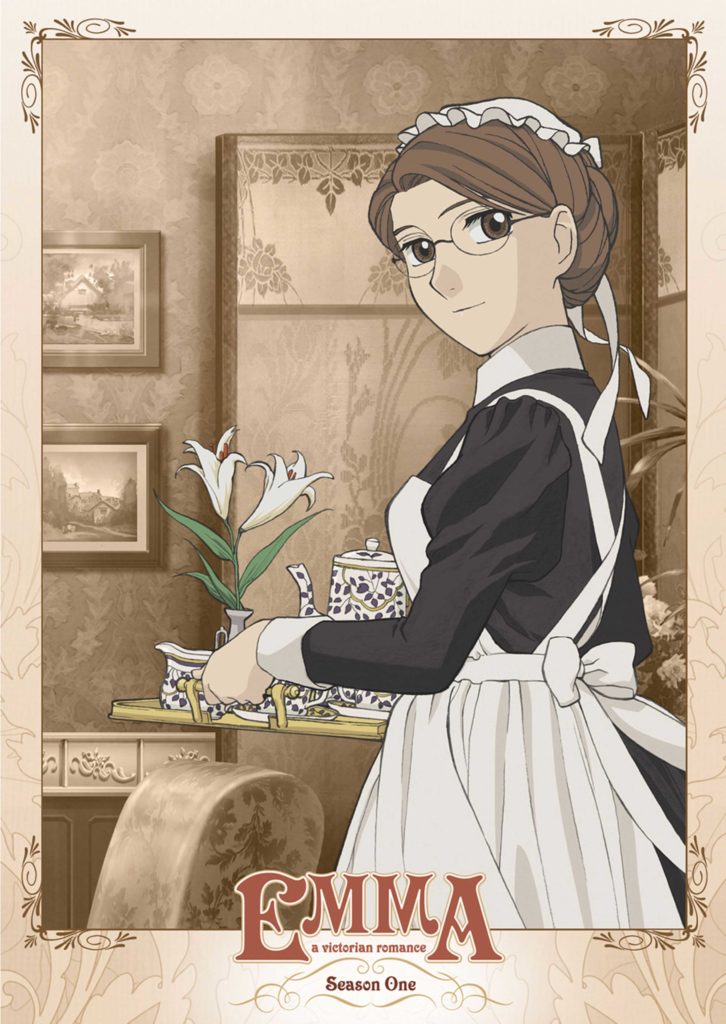
Emma: A Victorian Romance is a fantastic melodrama, set in England and filled with historically accurate flourishes.
However, the composition and size of Emma’s fanbase is quite different from those of the action-packed boys’ and children’s IPs that tend to dominate the English-speaking market. (Think: Dragon Ball Z, Pokémon, or current favorites Demon Slayer and My Hero Academia.)
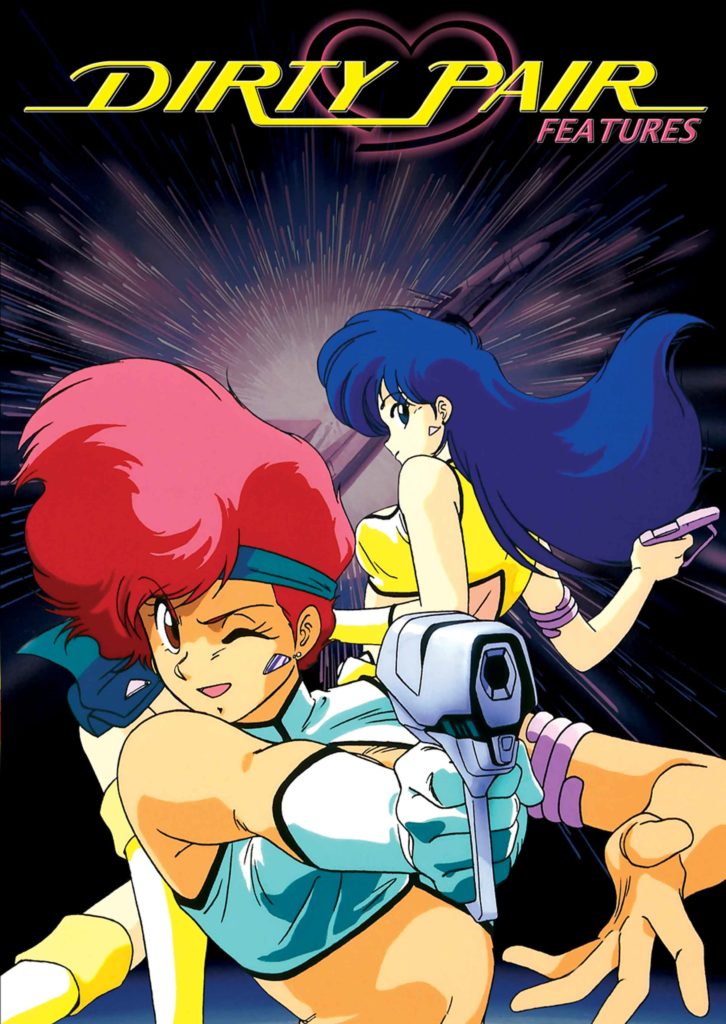
On the flipside: The challenge for sci-fi property Dirty Pair is its vintage.
Classic anime fans revel in its 1980s animation and action-comedy sensibility. But a notable segment of younger and newer fans can’t get past what they view as dated visuals and storytelling.
(Even though many of their favorite, present-day creators cite the series as an influence.)
To effectively market an Emma, a Dirty Pair, or any of the properties at the bottom of this page, you must:
- Understand why fans love the property;
- Embrace those factors; and
- Bring those unique points to the attention of the audience who will love that property…
If they only knew about it.

A strategy that begins — and ends — with the fans
Communications-driven marketing strategies — plus a willingness to experiment, fully utilize the tools and assets at my disposal, and jump on opportunities — maximized the potential of these IPs and helped them exceed market expectations.

Leveraging both sides of my role as marketing director
Marketing Right Stuf’s ecommerce and publishing divisions simultaneously became an advantage that allowed me to apply knowledge gained from one area to the other.
In addition to Right Stuf’s sales data for Nozomi and Lucky Penny titles, I gained an industry-wide perspective via my work for Right Stuf’s online store, which sold anime and manga (Japanese comics) from every English-language publisher in the U.S. and Canada.
This unique view encompassed:
- How the titles I promoted were performing, in comparison to similar titles from other publishers;
- Which titles (and genres) fans were buying via Right Stuf’s store;
- Why they purchased specific releases and products; and
- Who bought these DVDs, Blu-rays, books, and other licensed items — because so many fans went out of their way to tell us and share their hauls publicly!
The extra background knowledge also became a valuable marketing reality check, as I contributed to licensing discussions.
Even when I personally loved a title, I didn’t recommend it for potential acquisition if I couldn’t see a way to market it successfully.
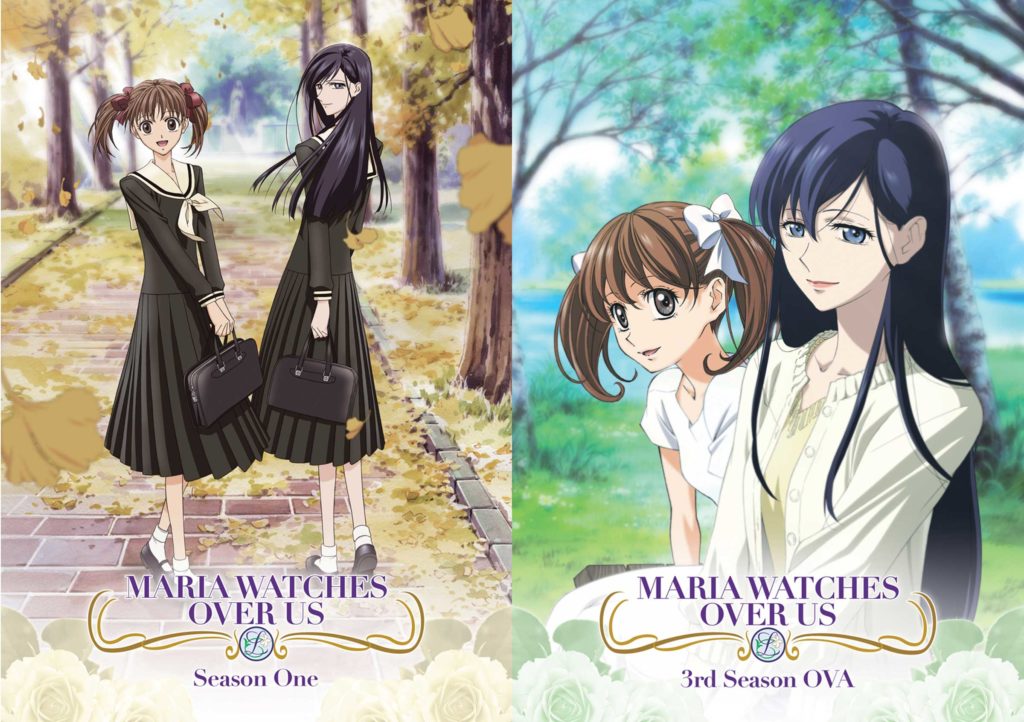
Getting to know the fans — and potential fans — for each title
Every individual is a fan of someone or something.
You see it in action when fans drive 60 miles (one way!) to see a certain Celtic rock band for the fourth or fifth time. Start watching a TV series starring an actor they admire. Or recommend a favorite author’s newest book.
If you’re willing to listen, anime fans are excited to tell you all about what they love and articulate specifically why they love it.
There’s always a reason.

Two-way fan communication — with an emphasis on listening
Anime fans also tend to be early adopters. They were among the first to build websites, join email lists, and form virtual communities via listservs, forums, and social media.
I was in PR and marketing before I was an anime fan. But I was an anime fan — and in those same spaces — long before I started marketing anime. It gave me an important edge as I continued to engage online, this time in a professional capacity.
The forums were one of the first places where I served as an accessible spokesperson of record for the company and its divisions, in addition to media relations activities. My team and I also became quite active on Twitter and Facebook as those started to gain traction.
Conveying accurate information about upcoming releases was an initial (and obvious) use of these channels.
Soon, the ability to obtain fan feedback —
directly and indirectly —
became even more valuable.
Ongoing, daily participation on forums and social media became an important mode of communication, as well as the foundation of a robust social listening program in those same public, online spaces.
- Providing information and publicly answering fans’ questions about the publishing division’s new licenses, upcoming releases, and products.
- Proactively soliciting fan feedback and requests. Then lobbying for its consideration during product development and incorporating it into targeted marketing plans.
- Observing fan conversations — from most anticipated (and yet unlicensed) titles to manga reading habits and which DVD releases, special features, and merchandise they preferred (across all publishers).
- And finally, noting where specific subsets of fans (and fans of particular series) congregated online. When appropriate, I also reached out to community leaders and influencers.
The above activities made it more likely that releases delivered — and the marketing respected — what made each property so special to its fans.

Making it possible for fans to participate — even if they don’t live near major anime conventions
As a smaller anime publisher, Right Stuf originally saved most of its acquisition announcements for an annual in-person panel at Anime Expo (AX). It was — and still is — the largest U.S. anime convention.
There were some issues with this:
- Every anime publisher tried to announce something at AX, which increased the potential for niche announcements to get buried.
- What if you needed to make an announcement any other time of year?
- Fans who attended the panel were genuinely psyched about the announcements. But all everyone else got was the “excitement” of reading the press release. (Just not the same.)
- Fans who weren’t at the show — but stalked online forums for breaking news — vastly outnumbered the fans who attended the panel in person.
Going online to announce The Third

Several months into the job, we did have to make a standalone acquisition announcement for the sci-fi series The Third: The Girl With the Blue Eye.
Instead of just issuing a press release, the web design department and I collaborated to create an online acquisition announcement event.
The announcement included:
- Covertly developing a series microsite.
- Working with Chris Beveridge, the owner of AnimeOnDVD.com (AoD), to execute a multi-day, guerilla marketing campaign leading up to the announcement.
(The giant, animated insects that figure prominently in The Third “invaded” the AoD forums.)
- And then, simultaneously launching the microsite, going public on AoD, and issuing the press release.
The fan reaction to the online launch was overwhelmingly positive.
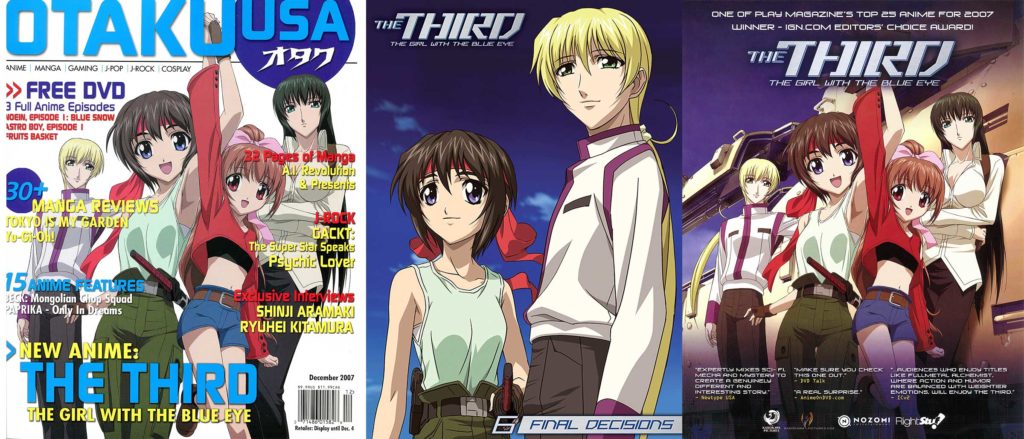
Before its actual DVD release, The Third was the subject of multiple online articles and landed the cover of Otaku USA magazine. Plus, we worked with IGN to offer fans a chance to watch its first episode for free, via online streaming.

From there, event-related marketing expanded (online and offline) to include:
1. More standalone, online events to announce new license acquisitions.
2. The addition of online components to in-person events, like Anime Expo, where major announcements were made.
- These featured dedicated “coming soon” sites, countdown timers, simultaneous in-person and online announcement reveals, real-time fan interaction and programming via social media, and timed distribution for press releases and blasts to the email list.
3. Expanded convention programming and cross-promotions.
- Panels and screenings in-person at Anime Expo (Los Angeles, California) and Anime Iowa.
- Proactive outreach to conventions’ video programming departments. This provided fast-tracked screening permissions and complimentary screeners (new and backlist titles) to almost every anime convention in the U.S.
- Sponsorships and trades with conventions that offered souvenir programs and other advertising opportunities.
4. A retooled support program for local anime clubs — at public libraries, high schools, and post-secondary schools, colleges, and universities.
- Benefits included streamlined screening permissions, plus complimentary DVD screeners and promotional goodies.
Nurturing long-term, collaborative relationships with enthusiast media, influencers, and publishers
In addition to fan relations, my overall strategy also placed a priority on developing collaborative relationships with external stakeholders — from members of the anime and geek media to influencers and marketing counterparts at several U.S. manga publishers.
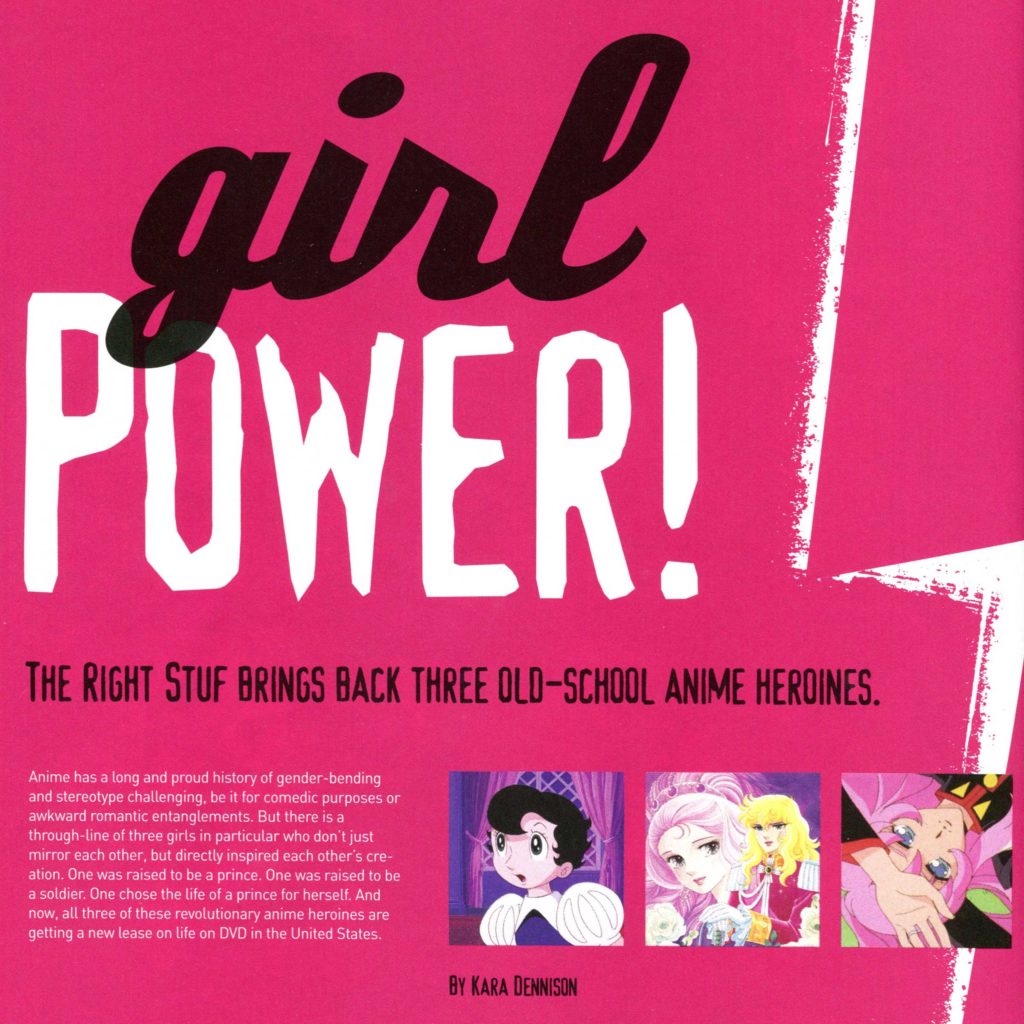
Here’s how:
1. Maintaining an ongoing dialogue with editors regarding new releases, story ideas (theirs and mine), and the availability of licensor pre-approved art and multimedia assets for editorial use.
2. Diversifying the media and reviewer program to include freelance writers and contributors.
- Knowing, in advance, which materials were available made it possible for contributors to pitch multiple editors — and easier for editors and production teams.
- This also led to a high volume of quality blog, online, and podcast content from established and up-and-coming creators.
3. Collaborating with subject-matter experts and niche influencers to:
- Better understand the history and established fanbase for a specific series or genre;
- Proactively collect feedback on product development and marketing activities; and
- Further refine the message and tone of marketing, communications, and social media interactions if necessary.
4. Establishing and amplifying co- and cross-promotional relationships with manga publishers who held the English-language rights to the source material (or adaptations) of Right Stuf’s anime acquisitions.
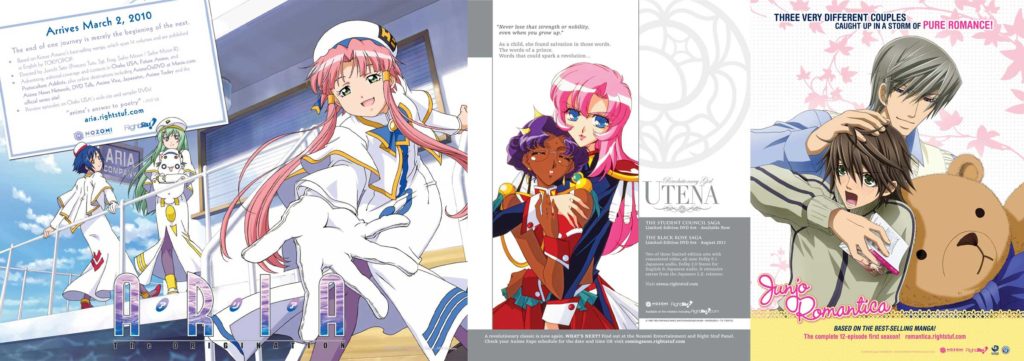
Results and impact
The marketing and communications programs I led had a major, positive impact on the home video division’s sales, the prestige of its releases, and its perception among fans and members of the media and anime industry.
Lasting increases in both home video sales and IP longevity
Most of the titles that I introduced and fully launched sustained notable fan interest over time.
- From acquisition announcement and the initial physical media release to multiple re-releases (and re-stocks), plus digital licensing (video on demand, download to own, streaming) and self-distribution via YouTube.
- Several properties have gone on to be re-released on Blu-ray and as high-end limited editions by the publishing division.
Two properties (ARIA and Emma) were the subjects of successful crowdfunding campaigns. A more recent campaign for Dirty Pair was fully funded, including stretch goals.
- After the licenses for Maria Watches Over Us and The Rose of Versailles expired, other distributors quickly picked them up for release on Blu-ray — based on their continued notoriety and fan support.
A disproportionate volume of high-value editorial coverage
(Especially given the niche and classic nature of the anime properties.)
- The titles promoted on my watch received an exceptional amount of magazine features and articles, in addition to ample coverage from online anime publications, independent bloggers, and podcasters.
A significantly raised profile for the publishing division
Among fans and members of the English-language anime industry and media.
- Levels of chatter and positive sentiment became — and remained high — throughout my time with the company.
- This turned out to be a notable factor that helped reduce the Great Recession’s impact on the publisher and its releases.
Many of the practices initiated under my leadership were adopted by marketers at other U.S. anime and manga publishers.
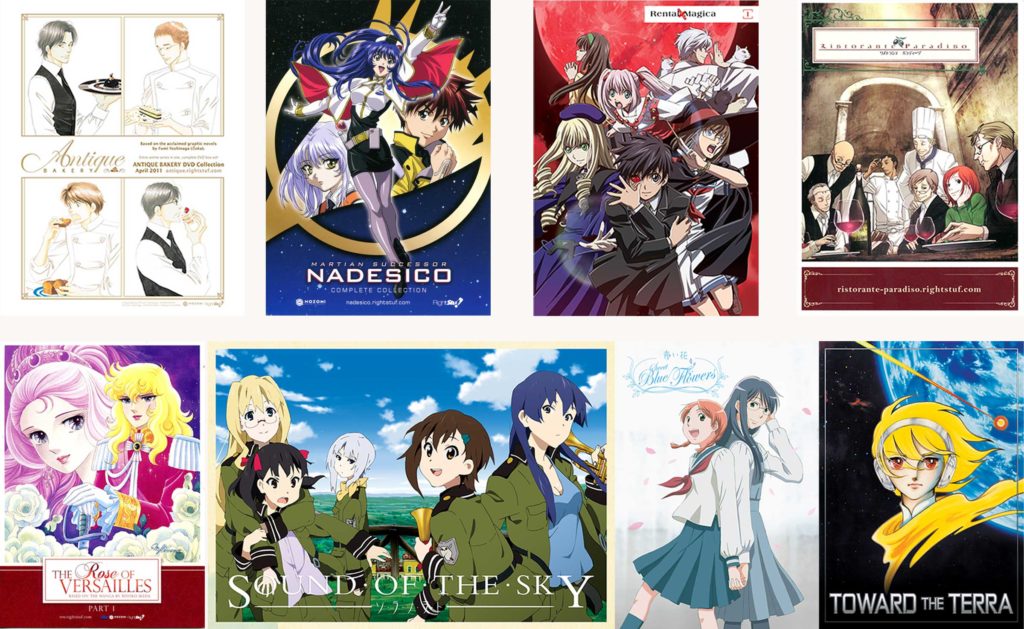
Notable properties (and personal favorites)
- Antique Bakery
- ARIA The ANIMATION (plus sequels The NATURAL, The OVA: ~ARIETTA~, and The ORIGINATION)
- Classic Dirty Pair (TV series, OVA series, and feature films)
- Emma: A Victorian Romance (2 TV series)
- Junjo Romantica (2 TV series)
- Maria Watches Over Us, a.k.a. Maria-sama ga Miteru (3 TV series + OVA series)
- Martian Successor Nadesico
- Princess Knight
- Rental Magica
- Revolutionary Girl Utena
- Ristorante Paradiso
- The Rose of Versailles
- Sound of the Sky
- Sweet Blue Flowers
- The Third: The Girl With the Blue Eye
- Toward the Terra
Artwork for the IPs mentioned is copyright the respective owners.
(Full copyright listing here.)